Tennis is a sport with many rules and regulations, and one of the most important aspects of the game is the tie break. A tie break is a unique way to resolve a set that is tied at 6-6, and it can be a crucial moment in a match.
These rules are essential for players and spectators alike to understand, as they can impact the outcome of a game. In this guide, we will explore the ins and outs of tennis tie-break rules, from how it is scored to common mistakes to avoid. Whether you are a beginner or a seasoned tennis player, understanding tie-break rules is essential for playing and enjoying the game to the fullest.
Definition of a tie break

A tie break is a special game that decides the winner of a set when the player scores in the set have reached 6–6. It is a kind of tie-breaker that helps to make sure that sets do not continue indefinitely. In regular play, it is just one single game to decide who will be the winner of the set and will move one step closer to winning in the tournament or match.
They are played until one player wins seven points by a margin of two points or more, with the player scoring seven points winning the tie-break and therefore the set. However, if there is no clear winner by this point then the tie-break shall continue until one player has an advantage of two points over their opponent.
This applies even if a player wins six games in succession and so reaches seven points before their opponent has scored five. Even after this point, should both players still be level then they will have to play further games in order to win the tie-break and thus decide who shall win that particular set.
When a tie-break is used
It is used to determine the outcome of a set when both players have reached 6 games each. It is the final piece of a set and its purpose is to decide who wins it. The player that wins the tie-break wins the set.
In professional tournaments, it’s become standard for all sets apart from the final set of a match to be decided by a tie-break game if both players reach six games each. This helps ensure that matches don’t run on too long and keeps them within realistic timelines.
In some competitions and amateur play, some sets are decided by regular games rather than tie breaks, however, this is not recommended as it can lead to long drawn out matches with several “sudden death” points being played before either player gets close to winning.
They may also be used during matches on other occasions such as deciding tournament winners in round-robin formats when there’s an odd number of games in a match, or in Davis Cup-style competitions.
Scoring
In Tennis, the tie-break system is used in the last set of a match to decide the winner of the match when the set reaches 6-6. In a tiebreak, the first player to reach 7 points, while still leading by at least two points, wins the game.
In this article, we will explore how the tiebreak works, how you can score it, and what to do if the score reaches a tie-break.
Points in a tie break
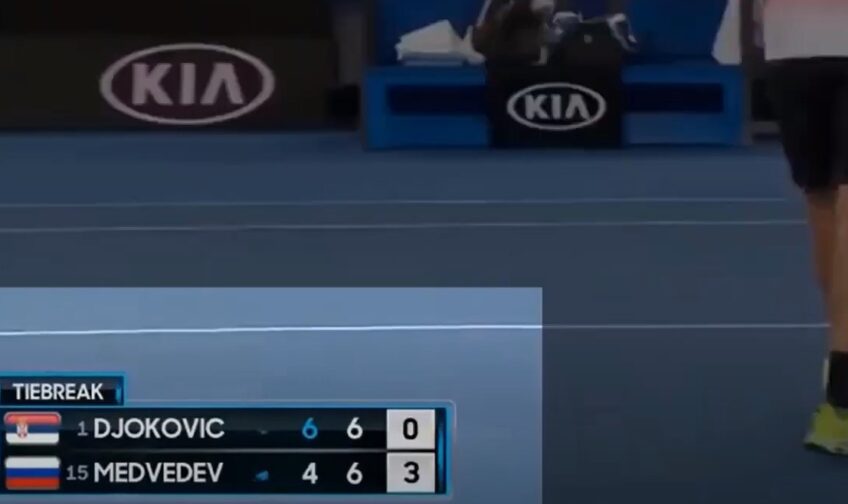
It is a special type of scoring system used in the game of tennis. It is typically used when a match score has reached 6-6 (or 12-12 in doubles) in any set, or 5-5 in the final set. If a tie break is needed, the players compete until one player has won at least seven points and two more points than the opponent (or until an absolute limit of 12 or 14 points).
Points scored during a tie break follow normal point scoring: each point won counts as one point towards the player’s score, with traditional scoring including odd-numbered games up to 7, at which time an 8th game is added by counting down from 7 and then proceeding as usual from there. In some tie breaks, players may need to win nine points instead of seven for an absolute victory; this alternative format can be seen very commonly in international tennis tournaments.
In most tournaments, sets decided by a tiebreak are usually best out of three; however certain grand slams such as Wimbledon utilize best out of five sets with ties broken after six games all are completed. The alternative format may also require multiple rounds; once the player reaches six games all within the tiebreak format they play another round winning between two to four additional games depending on venue rules and preferences. This can also mean that longer matches are determined by either player winning two or more consecutive rounds or being ahead after each round (with no ties being necessary).
How to win a tie-break
A tennis tie-break is an ultimate form of deciding the outcome of a set when scores reach 6–6. It is usually a sudden-death situation and therefore requires players to be sharp and focused throughout. In a tie-break, each player gets one point every time they win a rally, until one player reaches seven points with at least a two-point lead. The first player to do so wins the set.
In situations where both players are tied at 5–5, 6–6 or any other even score, the tie-break will be played to decide the outcome of the set. During the tie break, each player or doubles team takes turns hitting serves one at a time after an initial flip to determine who will start serving first in the game. The serve alternates between each side and each point will count towards deciding which player or team gains victory in that particular set.
To win a tie-break and gain victory in that particular set both players must have reached 6 points before one of them reaches 7 points with at least two clear points ahead of their opponent. For example, if Player A has 6 points and Player B has 4 points then Player A will gain victory as soon as they score their seventh point even if Player B scores their fifth point during that same rally. Points continue to be won until either a winner is declared or they reach 12–12 in which case an additional two points need to be scored by either side with an additional two-point lead prior to gaining victory over your opponent.
Rules
Tennis tie-break rules are critical rules to understand in order to understand the game. A Tie-Break is a name given to a set of rules to decide the winner of any set when the score is 6 games all.
As the game progresses, a tie-break is played to decide the winner of the set. Let’s look at the specifics of the tie-break rules.
Serving order
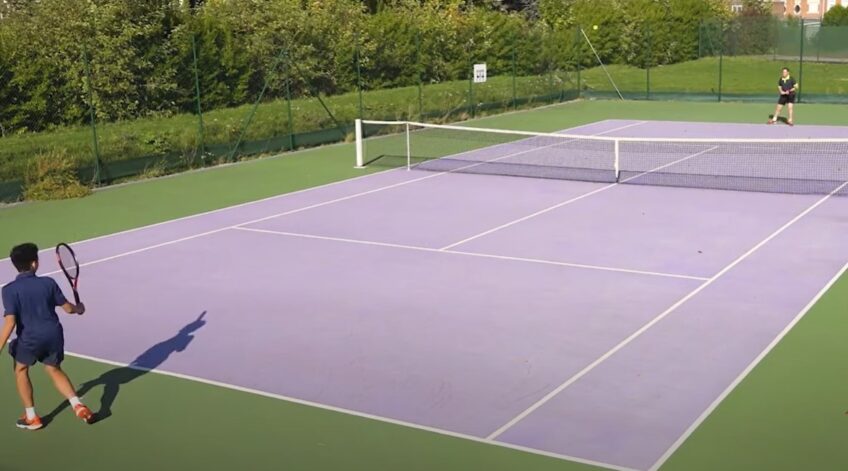
During the tie break, each player or team will serve for one point at a time, beginning with the player that is 1st on their team receiving the scoresheet. After 5 consecutive points have been scored by the 1st server (or their opponents score 5 consecutive points), the same process begins for the 2nd server. The order of events for a tennis tie-break is as follows:
- Team 1’s 1st server serves one point and then Team 2’s 1st server will serve one point.
- When either Team 1 or Team 2 has reached five points, both servers switch sides of the court and play mirror position until either team reaches seven points.
- If neither team reaches seven points during this time, both players switch sides of the court again and repeat until one player or one team reaches 7 points with a two-point lead over their opponent(s).
- Should both teams reach 6 there then becomes a sudden-death situation, with each side serving in turn until one player or team is leading by two points which would give them victory in the set tie-break.
Change of ends
After each point during it, players return to the opposite side of the court after a change of ends. During a tie-break during sets 1-6 in regular tour matches, players change ends every six points when the sum of points of both players is 6 or a multiple of 6. The Sum Rule is broken when one player has scored 7 or greater (i.e., 7, 8, 9, 10, etc.) and thus ends their sequence early; it may be possible for one side to have 4 points before the other side has two points.
After the first point scored by each player in a tiebreak, both players change ends and take their position at opposite sides of the court for receiving and serving again for any subsequent point/s in this tiebreak game/set. All other rules remain unchanged during a tiebreak game/set.
Change of servers
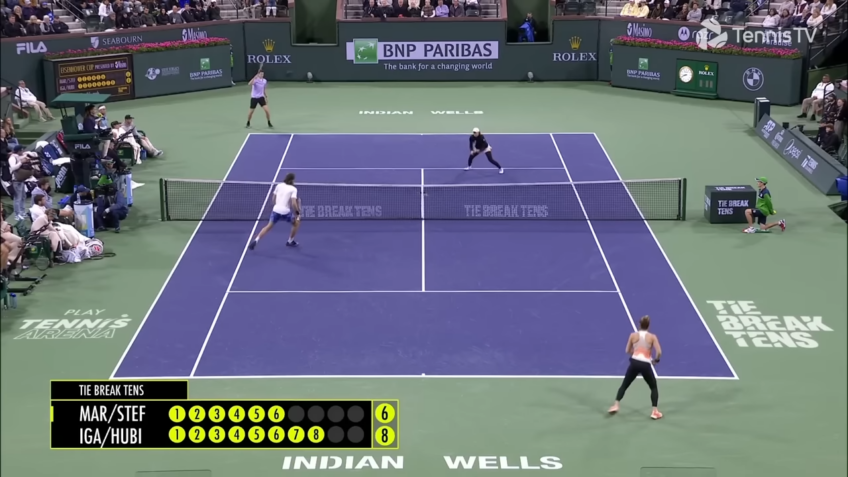
In a standard tie-break, the players are required to switch from their respective sides of the court after every six points in order to keep the server from having an advantage. With the change of servers, for each even number of points scored (six, eight, ten) both players will change sides. In essence, each player serves three points in a row and then changes over to the opponent’s court after their third point. It is at this point that they may choose to serve from the opposite side or stay on their original side.
The following rules apply when a player changes servers:
- The first server of a tie-break is the player whose turn it is to receive service at that particular moment in the play. For example, if it’s deuce (40–40) on serve then whoever was receiving service when deuce was reached will be the first server of the tie-break.
- The other player will remain to receive until he serves his first point in which case he/she then becomes the new server and starts serving from one end opposite his/her starting position receiving on that end.
- If in any subsequent game, one partner goes ahead by 6–0 called a mini break, his/her opponent can only break back either by winning three successive points or winning a double mini break (6–6). This means that once one partner reaches 6–0 there are very few chances for a mini break back by his/her opponent.
- Double mini-breaks happen only when both players reach 6–6 and there’s no mini-break advantage for either player.
- In some cases where the score reaches 12 points or 13–11 or 14 fast it may not possible for both players to change ends before the start of the tie-break and so roles may remain the same as per who was serving before the start of tie-break.
Strategies

This is a decisive way to end a set when both players are at 6 games apiece. Knowing the tie-break rules can help you develop strategies to win the set.
When to use aggressive shots
In tennis, the Tie-Break is used in sets when the score reaches 6-6 and provides an opportunity to stay on the offensive during crucial moments in a match. Good players will want to take advantage of this by looking to be aggressive with their shots and use them strategically.
When a player goes on the offensive during a tie-break, they should look to hit pacey winners or consistently deep groundstrokes that will put their opponent under pressure. This could involve hitting down the line or crosscourt and forcing their opponents into defensive shots. Going for aggressive shots also helps create winners that can be followed up by volleys near the net, which can often result in an early point for the player, as well as making it difficult for your opponent to mount any kind of comeback.
However, aggressive shots such as hitting angled shots can backfire if not executed properly. If mistimed or too heavily hit, balls can land out of bounds, costing the player valuable points in what can often be a close tie-break match.
You should therefore aim for strategic placement rather than raw power when going on the offensive – this could involve placing deep groundstrokes where your opponent’s feet are positioned thus forcing them into defensive stances and away from more attacking shots themselves. Additionally aiming angled shots involving heavy amounts of spin is likely to disrupt any rhythm your opponent may have been finding in short rallies thus keeping them off balance and under unpredictable pressure throughout the tie-breaker.
When to use defensive shots
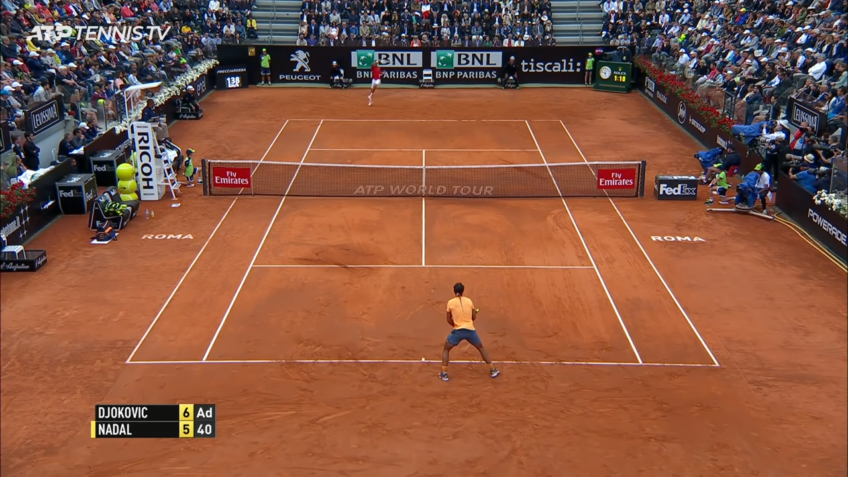
Successful tennis players blend a variety of shots to make up their game style, including both offensive and defensive shots. Individual players choose from a range of strategies depending on preference and the court situation.
At any point during the match, the player may employ offensive or defensive shots. Offensive shots are intended to win points outright, such as a powerful forehand or accurate serve. Defensive shots are used for retrieving balls hit deep behind the baseline, such as lobs or slices.
When using defensive shots it is their main purpose to prolong rallies until better opportunities arise and with that create pressure on their opponent’s side of the court. It is ideal for players to have access to an arsenal of defensive options when faced with an opponent’s powerful attack—for instance, a careful block back or chop hit can be employed. Ultimately these choices depend on one’s confidence level in each shot and how comfortable they feel playing from slightly behind the baseline.
Defensive shots can also be used at any point inside the court in order to take control of a rallying exchange and try to force errors from their opponents where possible. If anything creates hesitation in one’s stroke play then changing direction with changes in spin is often a wise option—as long as it feels intuitive: somersault serves, heavy kick-slice serves or short angled drop-shots can all be effective forms of defense when playing at close quarters with an opponent.
When to use drop shots
Drop shots are a useful and effective tactic to use in a tennis tie-break. A drop shot usually involves hitting a very soft, light shot just over the net that drops down close to the ground on your opponent’s side of the court. The idea is to force your opponent off balance by using deception while trying to earn the point before they can recover from their poor court position.
When you decide to execute a drop shot in a tie-break, it should preferably be done when your opponent is positioned at the net or further back from the baseline. Executing a well-timed drop shot when your opponent is behind or at the net will bring them out of position and help you capitalize on their momentary misjudgment. Placement of this delicate shot is also important — aim for an area near the service line in order for it to be effective, but not too close as that may result in an easy putaway for your opponent.
You should also try not to play drop shots too often. If used too frequently during a match, either your opponents will become accustomed to them and remain ready, or it may draw too much attention away from other parts of your game such as power serves, volleys, and groundstrokes which are essential pieces of any successful strategy.
Tips for winning a tie-break
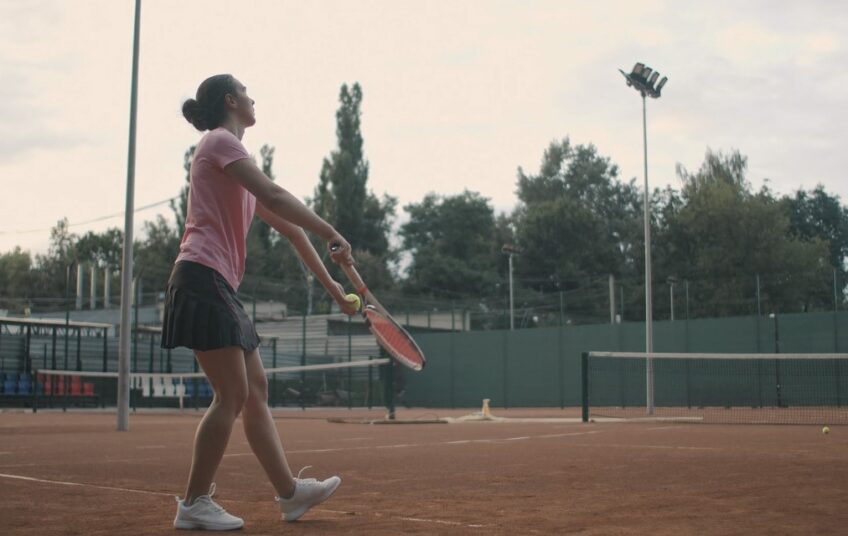
When playing a tie break, it is important to maintain your focus and keep the momentum of the game going in your favor. The following tips can help you outsmart and outplay your opponent:
- Make use of angles. Use slicing shots, drop shots, and cross-court shots in the tie-breaker to take advantage of the angles on the court.
- Have an aggressive mindset. Look for opportunities to reach the net as quickly as possible during tiebreakers, this will give you more opportunities to put away easy volleys.
- Focus on consistency all throughout the tiebreaker – Settle into a comfort zone and try not to go for huge winners you can’t make all the time.
- Use strategy when it comes to serve – Alternate between flat serves and kick or slice serves periodically during the match; doing this may be able to confuse your opponent.
- Keep up with court position – Take note that you need to stay closed up at the net after every service, making it harder for your opponent to hit deep shots past you.
- Utilize heavy topspin – Hit with a heavy topspin close to baseline; by doing this, you’ll ensure that even if your opponent hits back a good shot, it will not end up too short or into the open court.
FAQs

Can players switch sides during a tennis tie-break?
Yes, players switch sides after the first six points have been played, with the first player to serve to start from the left-hand side of the court.
Can a player change their racquet during a tennis tie-break?
Yes, players can change their racquet, but they are not allowed to leave the court to do so.
What is a double fault in a tennis tie-break?
A double fault is when a player serves two faults in a row, resulting in a point for the opposing player.
Can players challenge a call during a tennis tie-break?
Yes, as long as they have remaining challenges for that set.
What happens if a player is injured during a tennis tie-break?
If a player is injured during it, they are allowed a three-minute injury timeout, after which play resumes.
What happens if a player receives a warning or penalty during a tennis tie-break?
If a player receives a warning or penalty, it is counted as a point for the opposing player.
Can a player call a medical timeout during a tennis tie break?
Yes, a player can call a medical timeout, but it counts toward their three allotted timeouts for the match.
Conclusion
In conclusion, tennis tie-break rules are a crucial aspect of the game that all players and spectators should understand. Tie breaks can be tense and exciting, and they often have a significant impact on the outcome of a match.
By understanding the scoring, serving, and other rules of tie breaks, players can approach them with confidence and skill. Spectators can also appreciate the intensity of tie breaks and follow along with the scoring to better understand the progress of a match.
While there may be some confusion or mistakes when it comes to tie-break rules, taking the time to learn and practice them can make all the difference in a game. By keeping these rules in mind and staying focused during tie breaks, players can turn a potentially stressful situation into an opportunity to showcase their skills and determination.

